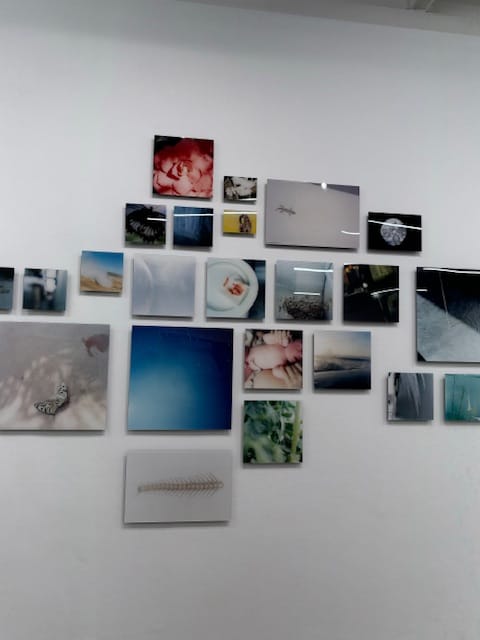By Elizabeth Abbott, Co-Deputy Arts Editor
Internationally acclaimed Japanese artist Kawauchi strives to recognise the beauty in the mundane through her new exhibition: At the Edge of the Everyday World. Created in collaboration with The Bristol Photo Festival, it is her first major UK exhibition since 2006.
She asks visitors to look for the similarities between the serene natural world and our time peaceful spent in our homes, following rhythms of flowing rivers, swaying trees alongside gentle domestic scenes, to comment on ‘humanity’s fragile links to the universe and ecology.’

Kawauchi meticulously captures moments of wonder in the in-between. She focuses on the middle of events which we’d usually look to the beginning or end of. For example, we see a flower mid-bloom, a baby with the umbilical cord still attached, and a leaf falling through the air before it hits the water below.
Whilst these shots are calm and still, we can predict the dynamism occurring prior and post to the point at which she captures the images. A photograph of fish in a bag injects colour into the white wall behind it. Although the bag on the table is still, with a static white slab covering half of the image, we can image the fish furiously wriggling about. Kawauchi cleverly plays with the duality of free movement to comment on the beauty of quiet dormancy alongside the potential for vibrant action.

Another duality presented in her work is her balancing of the individual and the collective. Whilst most of the images’ subjects are individual objects or living creatures, we, the viewers, have a collective idea of what these subjects represent because the subjects appeal to universal experiences. We all know of the beauty of sunlight falling through woodland and a delicious half-eaten apple. Through her steady focus on one subject, she is creating a wider discussion which everyone can get involved with.
Kawauchi emphasizes the importance of light in bringing attention to the ubiquitous nature of life. The clearest example of this is the light shining down on the heads of two children, focusing our gaze on their intimate enfold. All these individual shots work together to create a network of bright images like those you might expect in a sequence of pictures flashing before your eyes in a near-death experience. The photos feel intrinsic to our humanity; things we don’t always notice until we see the light shining on them, but that are forever at the back of our mind.

Despite the punchy impression of the unadorned photographs, I found that the upper floor might have been more impactful if the photographs were drawn together in a more obvious manner. It seemed that the commonality between the images was their origin being in rural Iceland. Kawauchi’s other work was made all the more personal when she included poems and short writing pieces in her photography books, and the reasoning behind stringing together the Icelandic photos in the exhibition could have been made clearer.
The positioning of the photography books at the end of the first floor allowed a great reflection on what had come before. The structure of the exhibition on the ground floor, allowed for a flowing movement between the photographs which felt like you were on a journey through a life, but the first floor hanging photographs dotted about added to the disjointedness of it.
Kawauchi’s work serves as a brilliant reminder to keep a keen eye on the kind, loving sources of light in the world, and the brilliant things they illuminate for us.









